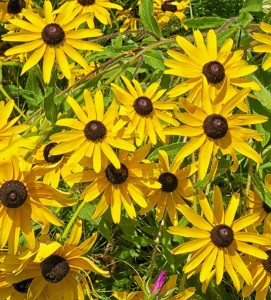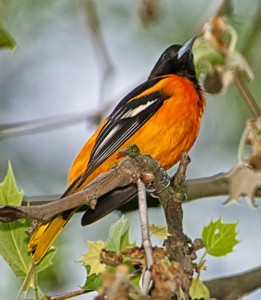Plant Geography and Other Plant Label Games
Posted in Science on July 17 2013, by Thomas Andres
Thomas Andres is an Honorary Research Associate with The New York Botanical Garden.

As a botanist, my idea of paradise is to have an identification tag appear on every plant that I or anyone with me does not recognize. At The New York Botanical Garden we enjoy what is about as close as you will get to that paradise. I am so thankful for those who perform the monumental task of labeling the plants in the Garden, even including the cultivar names on the labels where applicable.
Cultivar names (as in cultivated varieties) are those names that appear in single quotes following the scientific (“Latin”) name of the species. If you see an “x” in the name, that means the plant is an artificial cross by plant breeders between two species. The scientific name consists of two parts: the genus and the species name, with only the genus name capitalized. But in the case of cultivars, sometimes only the genus name is given because the species is not clearly delineated.
When there is a common name for the plant—and not all plants have common names—it appears at the top of the label in lower case letters. The word following the scientific name in capital letters is the plant family name. All family names end in the letters “-aceae.” At the bottom of the label, sometimes the native range or country of origin is listed. For more on the science of naming plants, Scott Mori’s posts are a fantastic resource.
I realize not everybody who visits the Garden is an avid gardener who bothers with reading the plant labels. There are, of course, many levels of enjoying the Garden, from taking in the scenery in its entirety to stopping, quite literally, to smell a rose. I often walk through the Garden just to look at the birds or pollinators in the flowers. The plant labels offer a convenient way of learning not only the plants’ identification, but a broader understanding of their origins.
[Not a valid template]I have a game I play that I think will encourage more passersby to read the labels, and maybe create a few budding botanists. If you were born outside of the U.S., look for plants from your home country, like those from Japan, South Africa, or elsewhere. Even for those born in the U.S., you may be able to find plants from your state. For example, I am from Baltimore, MD, so naturally I am interested in the flora of Maryland, especially if a given plant is named after my region. Walking through the Garden, I have found many examples.
First, there is the state flower, which for Maryland is the black-eyed susan (Rudbeckia hirta). In the new Native Plant Garden, these black and gold flowers are in bloom in the upland meadow. It is a prairie plant that moved eastward into Maryland as the forests were cleared. Since its colors evoke those of the state flag, it was chosen to be the state plant.

In the Jane Watson Irwin Perennial Garden in front of the Enid A. Haupt Conservatory, I found a plant named after Maryland that I have never seen growing wild there. The woodland pinkroot (Spigelia marilandica) is actually more common further south. The Cherokees and Osages used the perennial root for medicinal purposes as well as in rituals to induce visions and foretell the future. For my part, I can foretell that if you plant it in partial to full shade, you will have a very attractive ornamental that is excellent for attracting hummingbirds and butterflies.
Along the Daylily Walk there is an astounding variety of daylilies blooming now. Some of the cultivar names are quite amusing. But I was especially pleased to see one named ‘Baltimore Oriole’ which of course is the Maryland state bird, and indeed one of my favorite birds—not that I am biased. This daylily is a beautiful deep red, but in my opinion does not say “Baltimore Oriole” to me. For comparison, see the picture of the bird that I photographed earlier in the year over by Twin Lakes. Baltimore Orioles are common at The New York Botanical Garden and several nest here each year.
Next time you visit the Garden, don’t forget to read the labels. It may just enrich your experience.


Thanks for writing up the botanist’s perspective and the guidelines you deal with. I think that educating all gardeners and the general public is why we love horticulture.